Sound Design of Guqin Culture: Interactive Art Promotes the Sustainable Development of Traditional Culture
Abstract
:1. Introduction
2. Related Works
2.1. Public Art Design and Sound Interaction
2.2. Contemporary Social Orientation of Guqin Culture
2.3. Research Framework
3. Materials and Methods
3.1. Conceptual Design of the Interactive Installation
- For the “Feeling” level, we attributed the basic element of the Guqin to the sound of the Guqin instrument. When interacting with the installation, the most direct feedback received from the installation was the sound emitted by the installation. Therefore, we set up the installation to emit a specific musical sound from the Guqin when the sensor in the installation received a corresponding signal. This was the simplest form of interaction. In addition, the shape of the installation was designed to look similar to that of a Guqin in order to intuitively reflect the Guqin element.
- For the “Creation” level, we set the interaction to be triggered by specific actions (e.g., blowing, pulling, plucking, tapping, clapping, shaking, etc.) and the feedback of the interaction to be Guqin sounds. Because each participant interacted with the installation differently, attributes such as the amplitude and pitch of the sound were also different, making each piece of music unique and unrepeatable. This makes the installation more interesting and more likely to resonate with others. For example, participants could discuss the creation of a particular piece of music with each other. We also hoped that the participants would take the initiative to understand the Jianzi notation during the creation process. Therefore, we added elements of Jianzi notation in the body of the installation so that the participants would pay attention on the Guqin-related cultural elements during the experience.
- For the “Share” level, we wanted the interactive installation to encourage participants to spontaneously record and share the “Feeling” and “Creation” experience. Participants could feel specific emotions during the experience and then share the recorded sound and his/her feelings with other participants through the Internet. The interactive scene could also attract potential participants within the same environment. Participants in this session would allow the cultural connotation of the Guqin to be spread.
3.2. Prototype of Interactive Installation
- For the “Feeling” level, participants could listen to Guqin sound emitted by the interactive installation.
- For the “Creation” level, participants were free to create Guqin music. The infrared distance sensor detected the participant’s behavior by detecting the distance between the sensor itself and the participant’s finger. Since Guqin sound is divided into five scales, i.e., “gong”, “shang”, “jiao”, “zhi”, and “yu”, we used five infrared distance sensors corresponding to the five scales and recorded three different tones for each scale. That is, a total of 15 tones were pre-stored in the MP3 module. When the participants waved their fingers, the Arduino board controlled the speakers to emit continuous Guqin sounds of different tones based on the distance signals that were constantly being received. Therefore, the installation realized the “stringless playing” method.
- For the “Share” level, we surveyed whether the participants would take out their mobile phones to take photos and videos and share the Guqin music that they composed themselves and the creative experience with others to spread Guqin culture.
3.3. Evaluation Methods
- Pragmatic quality (PQ): When using the product or software, action objectives should be provided by useful and usable functions.
- Hedonic quality identity (HQ-S): This category focuses on the need to improve one’s own knowledge and skills as well as natural curiosity.
- Hedonic quality stimulation (HQ-I): This includes the communication of other relevant self-serving messages.
- Attractiveness (ATT): This is the global positive or negative evaluation of a product or software, such as whether it is good or bad.
3.4. Experiment and Procedure
4. Results
4.1. Evaluation of Guqin Interactive Installation
4.2. Comparative Analysis of Experience
4.3. Validation Analysis of the Design Model
5. Discussion
5.1. Theoretical Implications
5.2. Practical Implications
6. Conclusions
Author Contributions
Funding
Institutional Review Board Statement
Informed Consent Statement
Data Availability Statement
Acknowledgments
Conflicts of Interest
References
- Axelsson, R.; Angelstam, P.; Degerman, E.; Teitelbaum, S.; Andersson, K.; Elbakidze, M.; Drotz, M.K. Social and cultural sustainability: Criteria, indicators, verifier variables for measurement and maps for visualization to support planning. Ambio 2013, 42, 215–228. [Google Scholar] [CrossRef] [PubMed] [Green Version]
- Kuhlman, T.; Farrington, J. What is sustainability? Sustainability 2010, 2, 3436–3448. [Google Scholar] [CrossRef] [Green Version]
- Lin, J.; Cai, J.; Han, Y.; Zhu, H.; Cheng, Z. Culture sustainability: Culture quotient (CQ) and its quantitative empirical application to Chinese cities. Sustainability 2016, 8, 1235. [Google Scholar] [CrossRef] [Green Version]
- Loach, K.; Rowley, J.; Griffiths, J. Cultural sustainability as a strategy for the survival of museums and libraries. Int. J. Cult. Policy 2017, 23, 186–198. [Google Scholar] [CrossRef]
- Kurin, R. Safeguarding intangible cultural heritage in the 2003 UNESCO convention: A critical appraisal. Mus. Int. 2004, 56, 66–77. [Google Scholar] [CrossRef]
- Yang, Y.; Shafi, M.; Song, X.; Yang, R. Preservation of cultural heritage embodied in traditional crafts in the developing countries. A case study of Pakistani handicraft industry. Sustainability 2018, 10, 1336. [Google Scholar] [CrossRef] [Green Version]
- Jiang, Y.; Li, D.; Cang, S. Integration of card board games design and traditional culture. Art Res. Lett. 2014, 3, 18–24. [Google Scholar] [CrossRef]
- Qin, Z.; Ng, S. Culture as inspiration: A metaphorical framework for designing products with traditional cultural properties (TCPs). Sustainability 2020, 12, 7171. [Google Scholar] [CrossRef]
- Tu, J.C.; Liu, L.X.; Cui, Y. A study on consumers’ preferences for the Palace Museum’s cultural and creative products from the perspective of cultural sustainability. Sustainability 2019, 11, 3502. [Google Scholar] [CrossRef] [Green Version]
- Birchfield, D.; Phillips, K.; Kidané, A.; Lorig, D. Interactive public sound art: A case study. In Proceedings of the New Interfaces for Musical Expression, NIME-06, Paris, France, 4–8 June 2006. [Google Scholar]
- Hein, H. What is public art?: Time, place, and meaning. J. Aesthet. Art Crit. 2002, 54, 1–7. [Google Scholar] [CrossRef]
- Sharp, J.; Pollock, V.; Paddison, R. Just art for a just city: Public art and social inclusion in urban regeneration. Urban Stud. 2005, 42, 1001–1023. [Google Scholar] [CrossRef]
- Brignull, H.; Rogers, Y. Enticing people to interact with large public displays in public spaces. In Proceedings of the Human-computer Interaction Interact 03: IFIP TC13 International Conference on Human-computer Interaction, Zurich, Switzerland, 1–5 September 2003. [Google Scholar]
- Rogers, Y. Moving on from Weiser’s vision of calm computing: Engaging Ubicomp experiences. In Proceedings of the International conference on Ubiquitous computing, Orange County, CA, USA, 17–21 September 2006; Springer: Berlin/Heidelberg, Germany, 2006; pp. 404–421. [Google Scholar]
- Veenstra, M.; Wouters, N.; Kanis, M.; Brandenburg, S.; Moere, A.V. Should public displays be interactive? Evaluating the impact of interactivity on audience engagement. In Proceedings of the International Symposium on Pervasive Displays, Saarbruecken, Germany, 10–12 June 2015. [Google Scholar]
- Jenkins, H. Confronting the challenges of participatory culture: Media education for the 21st century. Educ. Gerontol. 2008, 29, 617–626. [Google Scholar] [CrossRef]
- Müller, J.; Alt, F.; Michelis, D.; Schmidt, A. Requirements and design space for interactive public displays. In Proceedings of the 18th International Conference on Multimedea 2010, Firenze, Italy, 25–29 October 2010. [Google Scholar]
- Nisi, V.; Jorge, C.; Nunes, N.; Hanna, J. Madeira story generator: Prospecting serendipitous storytelling in public spaces. Entertain. Comput. 2016, 16, 15–27. [Google Scholar] [CrossRef]
- Kim, S.; Im, D.U.; Lee, J.; Choi, H. Utility of Digital Technologies for the Sustainability of Intangible Cultural Heritage (ICH) in Korea. Sustainability 2019, 11, 6117. [Google Scholar] [CrossRef] [Green Version]
- Podara, A.; Giomelakis, D.; Nicolaou, C.; Matsiola, M.; Kotsakis, R. Digital Storytelling in Cultural Heritage: Audience Engagement in the Interactive Documentary New Life. Sustainability 2021, 13, 1193. [Google Scholar] [CrossRef]
- Tzima, S.; Styliaras, G.; Bassounas, A.; Tzima, M. Harnessing the Potential of Storytelling and Mobile Technology in Intangible Cultural Heritage: A Case Study in Early Childhood Education in Sustainability. Sustainability 2020, 12, 9416. [Google Scholar] [CrossRef]
- Franinovic, K.; Visell, Y. New musical interfaces in context: Sonic interaction design in the urban setting. In Proceedings of the Proceedings of the 7th International Conference on New Interfaces for Musical Expression, New York, NY, USA, 6–10 June 2007; pp. 191–196. [Google Scholar]
- Leman, M.; Desmet, F.; Styns, F.; Van Noorden, L.; Moelants, D. Sharing musical expression through embodied listening: A case study based on Chinese Guqin music. Music Percept. 2009, 26, 263–278. [Google Scholar] [CrossRef] [Green Version]
- Nathanson, D.H. Dao De Qin: A Case Study of the Guqin. 2012. Available online: https://digitalcollections.sit.edu/isp_collection/1344 (accessed on 22 January 2022).
- Wang, S. A brief description of the rhythmic notation of the Guqin Jianzi Notation. Art Rev. 2021, 2, 4–8. [Google Scholar]
- Chen, G. Overview of digital protection of Guqin art and intelligent analysis of temperament. J. Fudan Univ. 2019, 58, 335–342. [Google Scholar] [CrossRef]
- Leong, B.D.; Clark, H. Culture-based knowledge towards new design thinking and practice—A dialogue. Des. Issues 2003, 19, 48–58. [Google Scholar] [CrossRef]
- Wu, T.Y.; Hsu, C.H. The study of Taiwan aboriginal culture on product design. In Proceedings of the Futureground-DRS International Conference, Melbourne, Australia, 17–21 November 2004. [Google Scholar]
- Lin, R.-T. Transforming Taiwan aboriginal cultural features into modern product design: A case study of a cross-cultural product design model. Int. J. Des. 2007, 1, 45–53. [Google Scholar] [CrossRef]
- Feng, W.; Hu, J.; Funk, M. Practice and experience evaluation of interactive digital public art design. Zhuangshi Chin. J. Des. 2015, 9, 96–97. [Google Scholar] [CrossRef]
- Lee, R.M.; Draper, M.; Lee, S. Social connectedness, dysfunctional interpersonal behaviors, and psychological distress: Testing a mediator model. J. Couns. Psychol. 2001, 48, 310–318. [Google Scholar] [CrossRef]
- Hassenzahl, M.; Burmester, M.; Koller, F. AttrakDiff: Ein fragebogen zur messung wahrgenommener hedonischer und pragmatischer qualität. In Mensch & Computer 2003; Springer: Berlin/Heidelberg, Germany, 2003; pp. 187–196. [Google Scholar]
- Strckl, D.; Oberrauner, E.; Krainer, D.; Wohofsky, L.; Oberzaucher, J. Hedonic and pragmatic qualities of AAL pilot region technologies: Evaluation with the AttrakDiff Survey. In Proceedings of the ICT4AWE-6th International Conference on Information and Communication Technologies for Ageing Well and e-Health, Prague, Czech Republic, 3–5 May 2020. [Google Scholar]
- UNESCO. The Hangzhou Declaration Placing Culture at the Heart of Sustainable Development Policies. 2013. Available online: http://www.unesco.org/new/fileadmin/MULTIMEDIA/HQ/CLT/images/FinalHangzhouDeclaration20130517.pdf (accessed on 6 February 2022).
- UNESCO. Convention for the Safeguarding of the Intangible Cultural Heritage. 2003. Available online: https://ich.unesco.org/en/convention (accessed on 6 February 2022).
- Soini, K.; Dessein, J. Culture-Sustainability relation: Towards a conceptual framework. Sustainability 2016, 8, 167. [Google Scholar] [CrossRef] [Green Version]
- Murphy, K. The social pillar of sustainable development: A literature review and framework for policy analysis. Sustain. Sci. Pract. Policy 2012, 8, 15–29. [Google Scholar] [CrossRef] [Green Version]
- Zhuang, L.; Hong, T. Research on the conservation strategy of intangible cultural heritage based on consumer preference. Ethn. Art Res. 2010, 5. [Google Scholar] [CrossRef]
- Mpofu, P. The dearth of culture in sustainable development: The impact of NGOs’ agenda and conditionalities on cultural sustainability in Zimbabwe. J. Sustain. Dev. Afr. 2012, 14, 191–205. [Google Scholar]
- Luisa, E.; Roberto, M. Leveraging smart open innovation for achieving cultural sustainability: Learning from a new city museum project. Sustainability 2018, 10, 1964. [Google Scholar] [CrossRef] [Green Version]
- Laine, M. Culture in sustainability—Defining cultural sustainability in education. Discourse Commun. Sustain. Educ. 2016, 7, 52–67. [Google Scholar] [CrossRef] [Green Version]
- Google. Google Arts & Culture. Available online: https://artsandculture.google.com/explore (accessed on 6 February 2022).
- The British Museum. Samsung Digital Discovery Centre. Available online: https://www.britishmuseum.org/learning/samsung_centre.aspx (accessed on 6 February 2022).


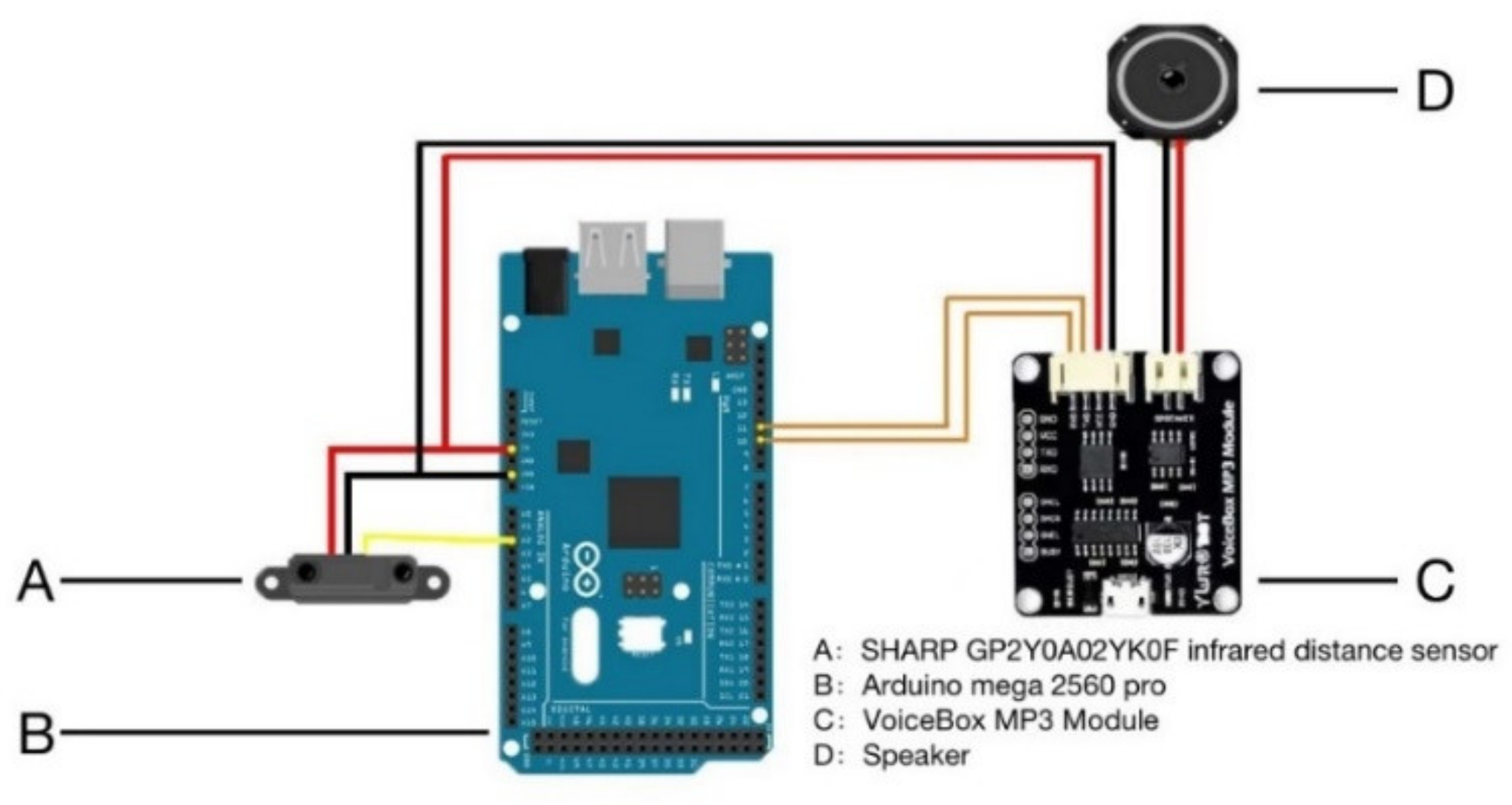
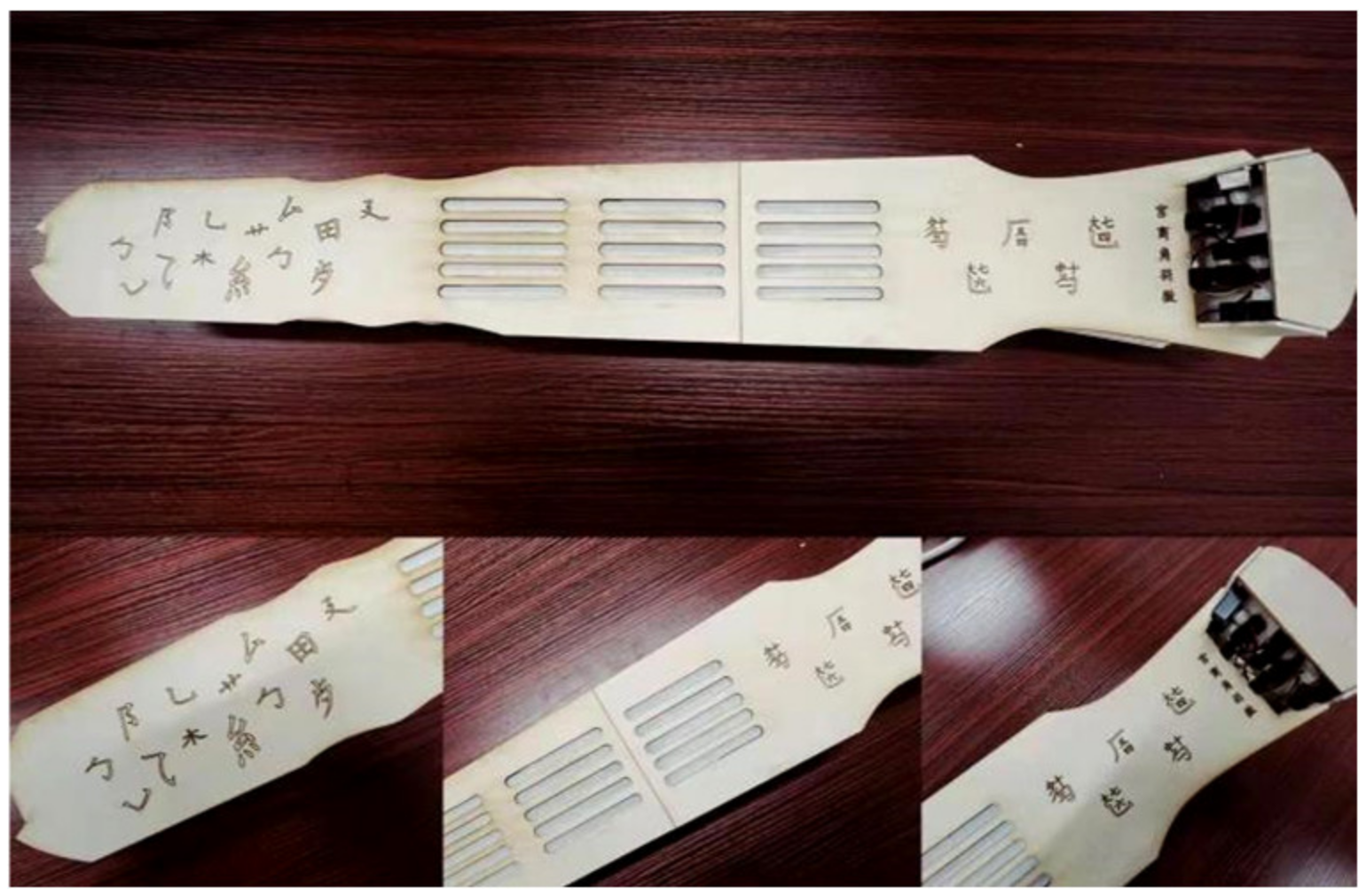
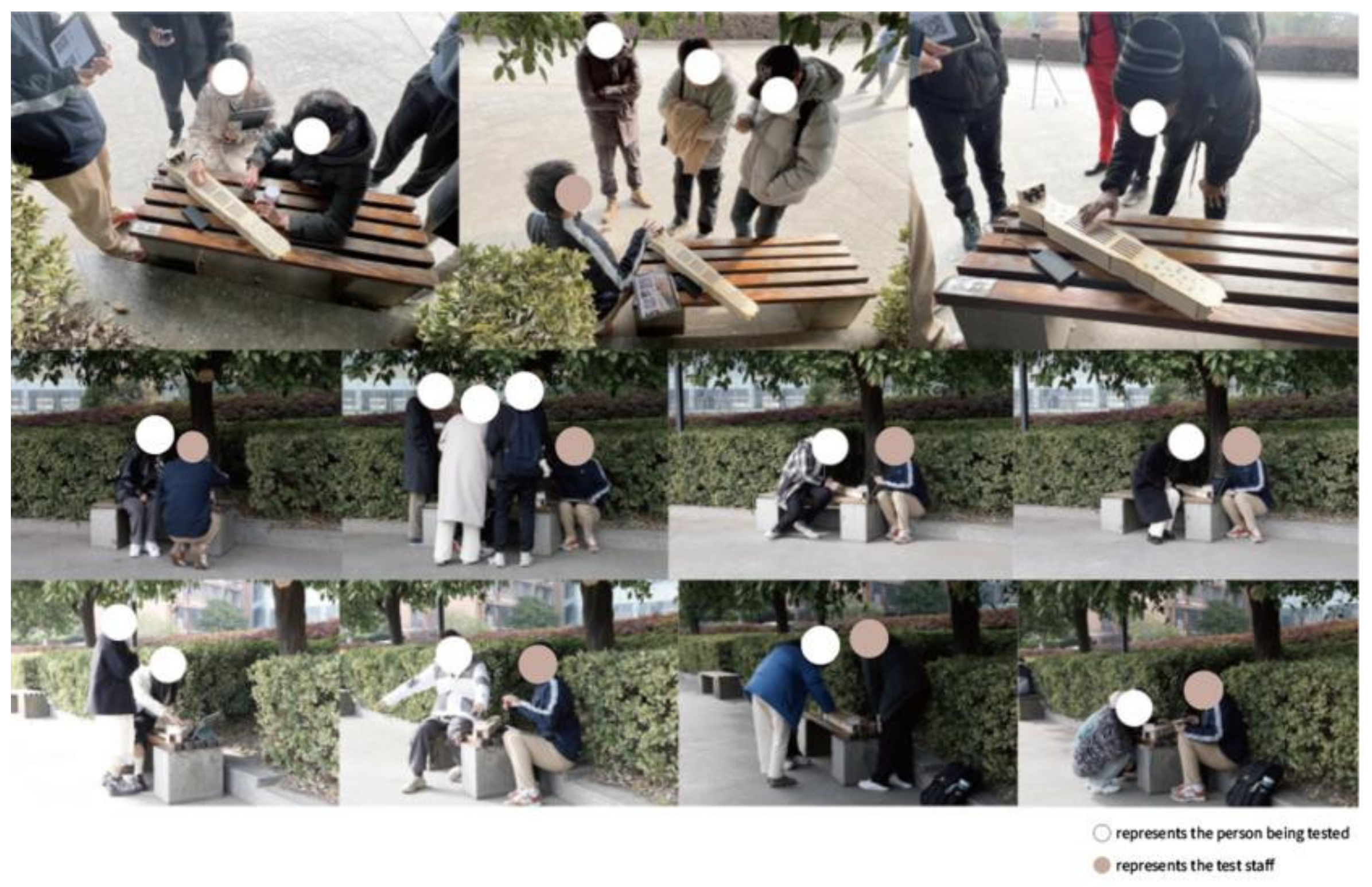
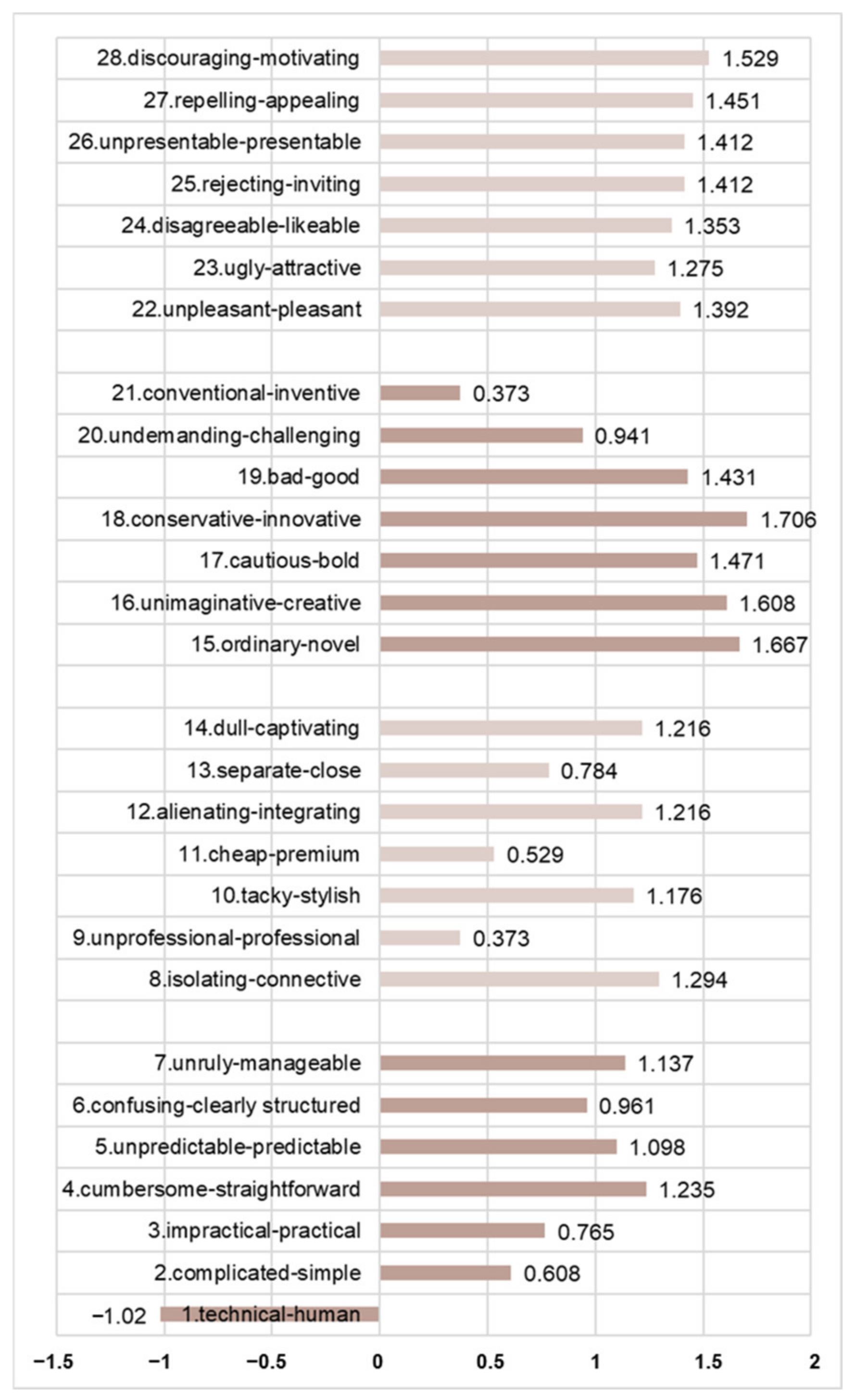
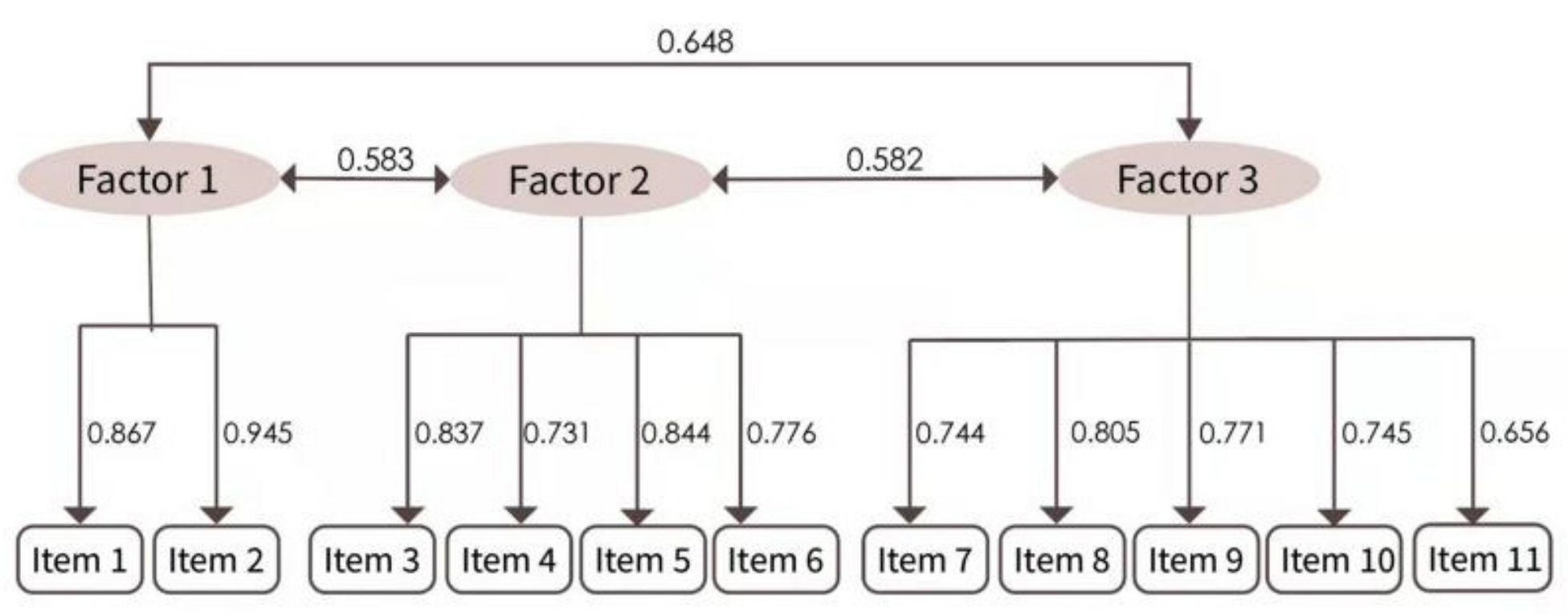
| Level | Item |
|---|---|
| Feeling: Listening and Perception (Physical and Tangible) | 1. I often hear Guqin music in my life. |
| 2. I often come into contact with Guqin-related elements in my life. | |
| Creation: Experience and Socialization (Practical and Behavioral) | 3. I understand the appearance and types of Guqin. |
| 4. I understand the Guqin music notation (letter notation, Jianzi notation). | |
| 5. I understand how to play the Guqin. | |
| 6. I understand the fingering of the Guqin. | |
| Share: Emotions and Reflections (Metaphysical and Intangible) | 7. I like listening to the music played by the Guqin. |
| 8. I often listen to the music played by traditional Chinese musical instruments in my life. | |
| 9. I would like to share the music I hear played on traditional Chinese musical instruments with others. | |
| 10. I think the cultural and spiritual connotations of traditional Chinese musical instruments (and the music they play) appeal to me. | |
| 11. If there is a chance, I would like to experience an interactive installation based on the traditional Guqin. |
| Group | Item | Average Value | Standard Deviation | F | p | Item | Average Value | Standard Deviation | F | p |
|---|---|---|---|---|---|---|---|---|---|---|
| A | 1 | 2.70 | 1.33 | 1.549 | 0.216 | 7 | 3.55 | 1.36 | 3.891 | 0.022 * |
| B | 2.89 | 1.48 | 4.16 | 1.15 | ||||||
| C | 2.45 | 0.63 | 3.77 | 1.03 | ||||||
| A | 2 | 2.48 | 1.17 | 1.704 | 0.185 | 8 | 3.24 | 1.43 | 1.586 | 0.208 |
| B | 2.84 | 1.49 | 3.70 | 1.66 | ||||||
| C | 2.45 | 0.97 | 3.43 | 1.20 | ||||||
| A | 3 | 2.28 | 1.25 | 17.036 | 0.000 ** | 9 | 3.45 | 1.16 | 8.699 | 0.000 ** |
| B | 3.40 | 1.07 | 4.33 | 1.12 | ||||||
| C | 2.39 | 1.04 | 3.84 | 1.27 | ||||||
| A | 4 | 1.85 | 1.02 | 3.656 | 0.028 * | 10 | 3.90 | 1.13 | 4.809 | 0.009 ** |
| B | 2.32 | 1.18 | 4.54 | 1.14 | ||||||
| C | 1.91 | 0.71 | 4.05 | 1.35 | ||||||
| A | 5 | 2.34 | 1.23 | 8.680 | 0.000 ** | 11 | 4.04 | 1.25 | 4.526 | 0.012 * |
| B | 3.16 | 1.11 | 4.68 | 1.00 | ||||||
| C | 2.43 | 1.09 | 4.23 | 1.34 | ||||||
| A | 6 | 1.84 | 0.98 | 28.961 | 0.000 ** | Total Score | 31.67 | 9.56 | 12.339 | 0.000 ** |
| B | 3.32 | 1.18 | 39.35 | 8.93 | ||||||
| C | 2.30 | 1.13 | 33.20 | 7.64 |
| Contrast Groups | Item | Average Difference | p | Item | Average Difference | p | Item | Average Difference | p |
|---|---|---|---|---|---|---|---|---|---|
| A–B | 1 | −0.193 | 0.391 | 5 | −0.815 | 0.000 ** | 9 | −0.886 | 0.000 ** |
| A–C | 0.247 | 0.309 | −0.089 | 0.693 | −0.393 | 0.087 | |||
| B–C | 0.440 | 0.080 | 0.726 | 0.002 ** | 0.492 | 0.039 * | |||
| A–B | 2 | −0.364 | 0.106 | 6 | −1.480 | 0.000 ** | 10 | −0.648 | 0.003 ** |
| A–C | 0.023 | 0.924 | −0.460 | 0.031 * | −0.150 | 0.518 | |||
| B–C | 0.388 | 0.122 | 1.020 | 0.000 ** | 0.498 | 0.039 * | |||
| A–B | 3 | −1.120 | 0.000 ** | 7 | −0.606 | 0.006 ** | 11 | −0.639 | 0.004 ** |
| A–C | −0.103 | 0.642 | −0.220 | 0.349 | −0.183 | 0.434 | |||
| B–C | 1.017 | 0.000 ** | 0.385 | 0.115 | 0.457 | 0.059 | |||
| A–B | 4 | −0.465 | 0.012 * | 8 | −0.463 | 0.080 | Total Score | −7.679 | 0.000 ** |
| A–C | −0.058 | 0.766 | −0.148 | 0.603 | −1.533 | 0.375 | |||
| B–C | 0.407 | 0.047 * | 0.315 | 0.282 | 6.146 | 0.001 ** |
| Factor 1 | Factor 2 | Factor 3 | |
|---|---|---|---|
| Factor 1 | 0.881 | ||
| Factor 2 | 0.490 | 0.795 | |
| Factor 3 | 0.553 | 0.457 | 0.757 |
Publisher’s Note: MDPI stays neutral with regard to jurisdictional claims in published maps and institutional affiliations. |
© 2022 by the authors. Licensee MDPI, Basel, Switzerland. This article is an open access article distributed under the terms and conditions of the Creative Commons Attribution (CC BY) license (https://creativecommons.org/licenses/by/4.0/).
Share and Cite
Shen, D.; Guo, H.; Yu, L.; Ying, J.; Shen, J.; Ying, S.; Bao, D.; Wang, Y. Sound Design of Guqin Culture: Interactive Art Promotes the Sustainable Development of Traditional Culture. Sustainability 2022, 14, 2356. https://doi.org/10.3390/su14042356
Shen D, Guo H, Yu L, Ying J, Shen J, Ying S, Bao D, Wang Y. Sound Design of Guqin Culture: Interactive Art Promotes the Sustainable Development of Traditional Culture. Sustainability. 2022; 14(4):2356. https://doi.org/10.3390/su14042356
Chicago/Turabian StyleShen, Danni, Herui Guo, Linghui Yu, Jie Ying, Jie Shen, Shuchen Ying, Defu Bao, and Ying Wang. 2022. "Sound Design of Guqin Culture: Interactive Art Promotes the Sustainable Development of Traditional Culture" Sustainability 14, no. 4: 2356. https://doi.org/10.3390/su14042356
APA StyleShen, D., Guo, H., Yu, L., Ying, J., Shen, J., Ying, S., Bao, D., & Wang, Y. (2022). Sound Design of Guqin Culture: Interactive Art Promotes the Sustainable Development of Traditional Culture. Sustainability, 14(4), 2356. https://doi.org/10.3390/su14042356






